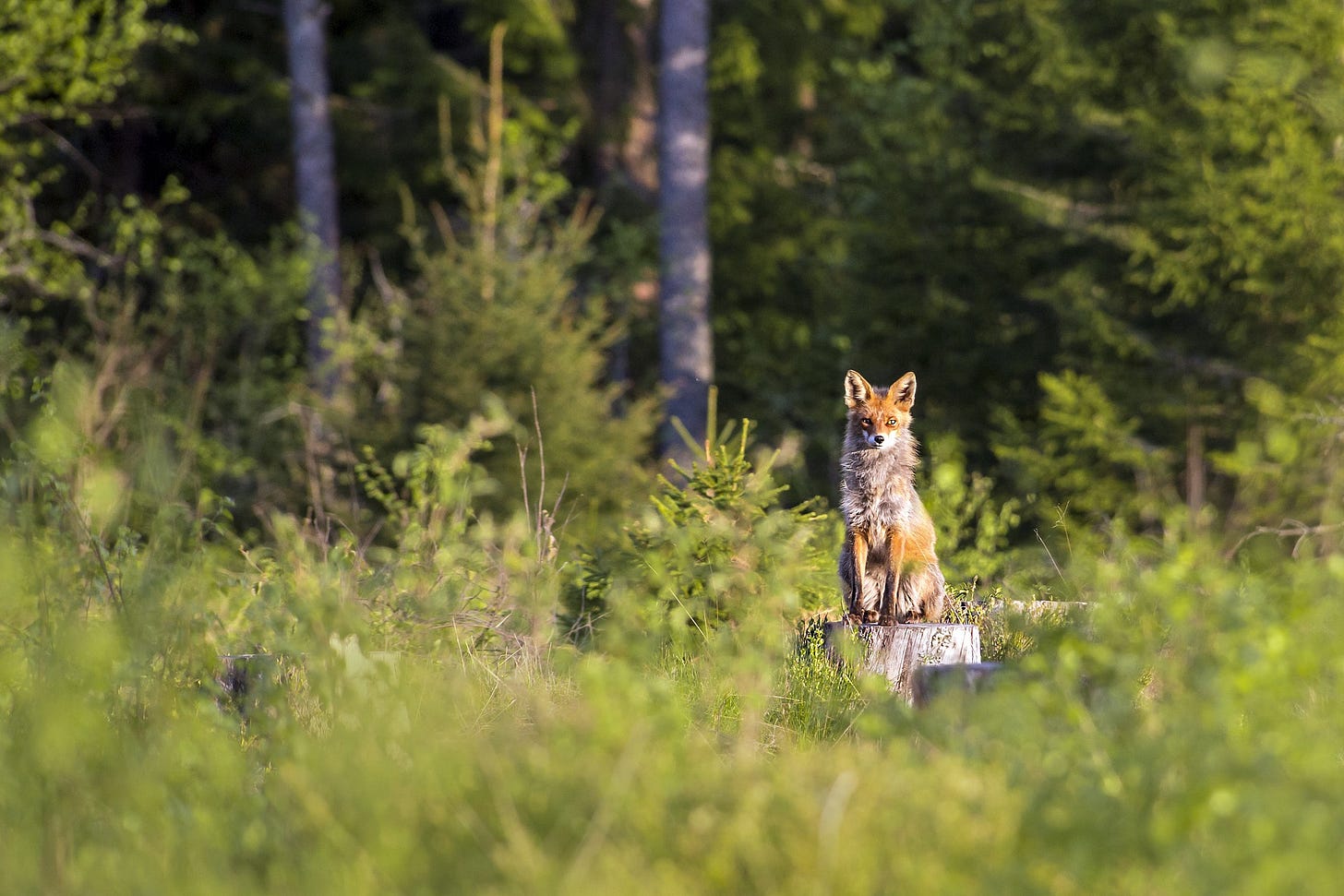It is a cool, cloudy morning here in Chicago, Illinois.
It rained yesterday, and it’s now cold enough, late enough in the season, that the ground has not dried even a day later. The rain helped many yellowing leaves fall to the ground, where this morning they still lay in my neighbor’s yard. No one has had any interest in raking them up. I’m not complaining — the yellow and brown speckles on the still-green lawns, dappled over the leafy ground cover and small trees, all glistening with water, look like a watercolor. Calm and untidy.
Last night, the country elected a new leader. Re-elected an old one, I guess. As a reporter, I don’t partake in advocacy anymore, especially for or against any political party or figure. But it’s not conjecture — in fact, I think it’s my duty — to note that the President-elect’s plans will be harmful to many of us.
Some of these proposals are cartoonishly bad. Robert F. Kennedy Jr., who has been promised some sort of power in the next administration, is opposed to the fluoridation of drinking water. This is both very silly and very stupid. A platform of Cavities For All. RFK Jr. is also opposed to vaccines. This is very silly, very stupid, and very dangerous. Over the past few years, a bird flu pandemic has been sweeping through the world’s avian communities, killing countless birds. It’s now spreading rapidly through cattle. Some people are starting to get it. So far, the threat level has remained low. If that changes, will we be able to protect ourselves?
Our country is also big enough, rich enough, powerful enough that what happens here can affect the whole planet. Earth is rapidly heating up, and the President-elect has provided no plan to address it. In fact, given the events of his last term, he is likely to stymie and block efforts to address climate change. To say time is running out has become such a cliche, and is not necessarily true — there will always be more time. But every moment we wait means more people will suffer, more people will die. The choice is between acting now and acting big or letting more people die.
And amid all of this, the ecosystems that shape us are slowly unraveling. Insects are dying, fish are disappearing, bats and whales and frogs are teetering on the brink of extinction — the snuffing out of an entire evolutionary lineage. Donald Trump did not cause these things to happen. But I am not convinced he will help prevent them from happening. I’m not convinced a lot of people would help prevent them from happening.
I saw one of those species a couple of months ago, right here in Chicago. It was not so cool that morning, and the leaves were still on their trees — and as I looked out the window in my kitchen, I saw a fox. A red fox, Vulpes vulpes. It was lying in the shade under the tree in my neighbor’s yard, calmly watching a cat lying in the sun. The cat, for its part, appeared unconcerned with the fox nearby. Perhaps they are friends.
The initial uncertainty over whether what I was seeing really was a fox quickly turned to excitement over my confidence that it was, in fact, a fox. But that soon turned into confusion again — where, exactly, had this fox come from? I don’t live in the densest part of Chicago by any stretch of the imagination, but I also don’t live near any large forest preserves where a fox might find peace. It’s possible the fox had wandered quite a long way that day, trotting in from the more tree-heavy parks that ring the city. I choose to believe another theory.
I choose to believe the fox lives right here in Logan Square, in my neighborhood. Walking around the neighborhood, at first glance, it wouldn’t seem like an ideal place for a fox to live — all the local parks are either too small, too open, or both, and the streets are dense and full of people and dogs. But if you look behind the facade of the grey stone buildings, new single-family homes, yellow brick apartments, five-over-ones and 20th-century bungalows, there is another side to Logan Square. Side alleys, with nooks and crannies and trash cans snake through every block, weaving through yards filled with trees and grass and shrubs. A fox could have no place among just one of those yards or alleys. But if it roamed between them all? It could live like a king, the secret king of Logan Square.
These cool fall mornings may not last forever. Not if the planet keeps on warming. That fox may not live here forever either — what good is a city to a fox if becomes too polluted, too devoid of life? And, in fact, I have not seen the fox since that first day. He may not live here at all.
But part of me knows I will see him again one of these days. Imagine that watercolor painting — the greens and yellows and browns all melting into each other, punctuated by the red and white of a wild carnivore’s fur, an ancient creature untamed among the hidden back alleys of the Midwestern grid.
One of these days.





